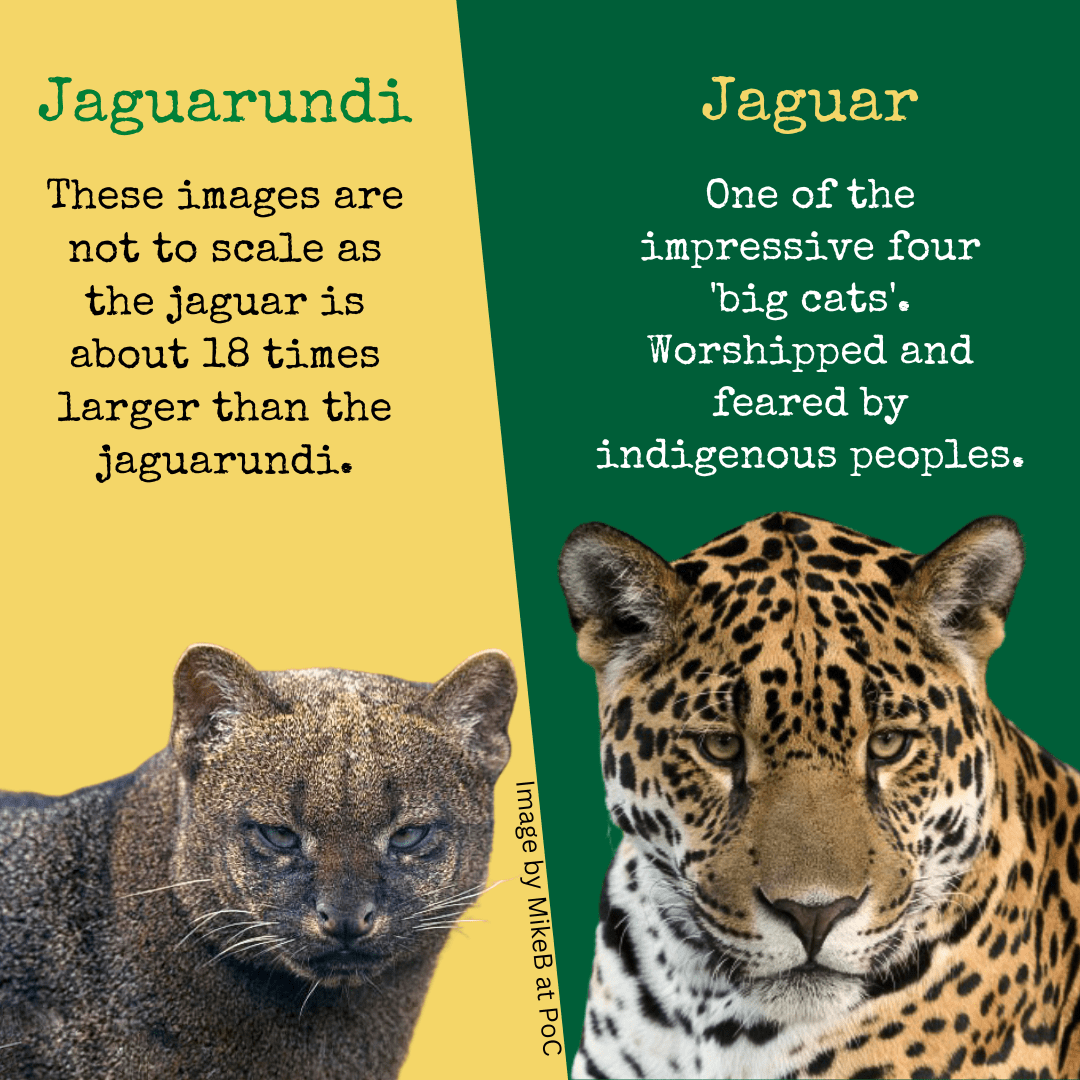The jaguar and jaguarundi are two completely different species of wild cat with the former being the 3rd largest wild cat species and the latter the 22nd largest (out of 37). To put it another way the jaguar is a very large wild cat, one of the ‘big cats’ as they can roar while the jaguarundi is a small wild cat. According to the Sunquists in their book Wild Cats of the World, the maximum weight of the jaguar is around 267 pounds while the max. weight of the jaguarundi is 15 pounds which is similar to the size of a large domestic cat. Many Maine Coons will be larger.

It isn’t just the huge size difference. The jaguar looks like a typical big cat; powerful and muscular with a massive bite force (the strongest of all the cats). The jaguar also has a superb spotted coat with ‘rosettes’. Very impressive. By contrast the jaguarundi’s coat is rather plain and nondescript to the point where it has protected the animal from being ‘harvested’ for its pelt.
A slightly larger small cat species, the ocelot, was consistently and mercilessly persecuted for the skin on its back, because it is so beautiful, in order to make fancy coats for mainly women. The jaguarundi is the “least marked of all the small cats; apart from a few faint markings on the face and belly, its short, sleek fur is uniform in color. There are two main color phases, an iron gray morph and a red-brown morph.” It has a ‘ticked tabby’ coat in cat fancy language.
In fact, the jaguarundi looks very peculiar for a small wild cat compared to the conventional looking jaguar. The jaguarundi baffled the scientific experts for a long time in terms of how to classify them taxonomically. Scientists like to place all the world’s species of animals and plants into categories but the jaguarundi does not naturally fall into one of these categories.
It is described as an ‘enigma’ taxonomically speaking. “It differs from all the other small South American cats in many respects”. It has an “unusual chromosome pattern” (Sunquists) as well a strange physical appearance which is not dissimilar to a marten. All the other small South American wild cats have 36 chromosomes compared to 38 for the jaguarundi. The same number as the Old World cats. The Old World refers to Africa, Asia, and Europe.
According to writings of a Swiss naturalist JR Rengger published in 1830, the jaguarundi became tame and affectionate in captivity. The same cannot be said about the formidable jaguar. I don’t know of any pet jaguars 😎. I can remember a picture of Jim Sanderson PhD a small wild cat specialist with a jaguarundi in his arms (see below).

The jaguar is not uncommonly seen in melanistic (black) form when it is called a ‘black panther’. The jaguarundi does not mutate to melanistic form as far as I know.
An interesting aspect of the comparison between these two wild cats is their names. The smaller cat has the same name as the larger with ‘undi’ tacked onto the end! Was this deliberate? Apparently not as it appears to be coincidental. The small cats name comes from the Old Guarani word ‘yaguarundi’. The name ‘jaguar’ comes from the indigenous word ‘yaguar’, meaning ‘he who kills with one leap’.
Below are some more articles on the jaguarundi.

